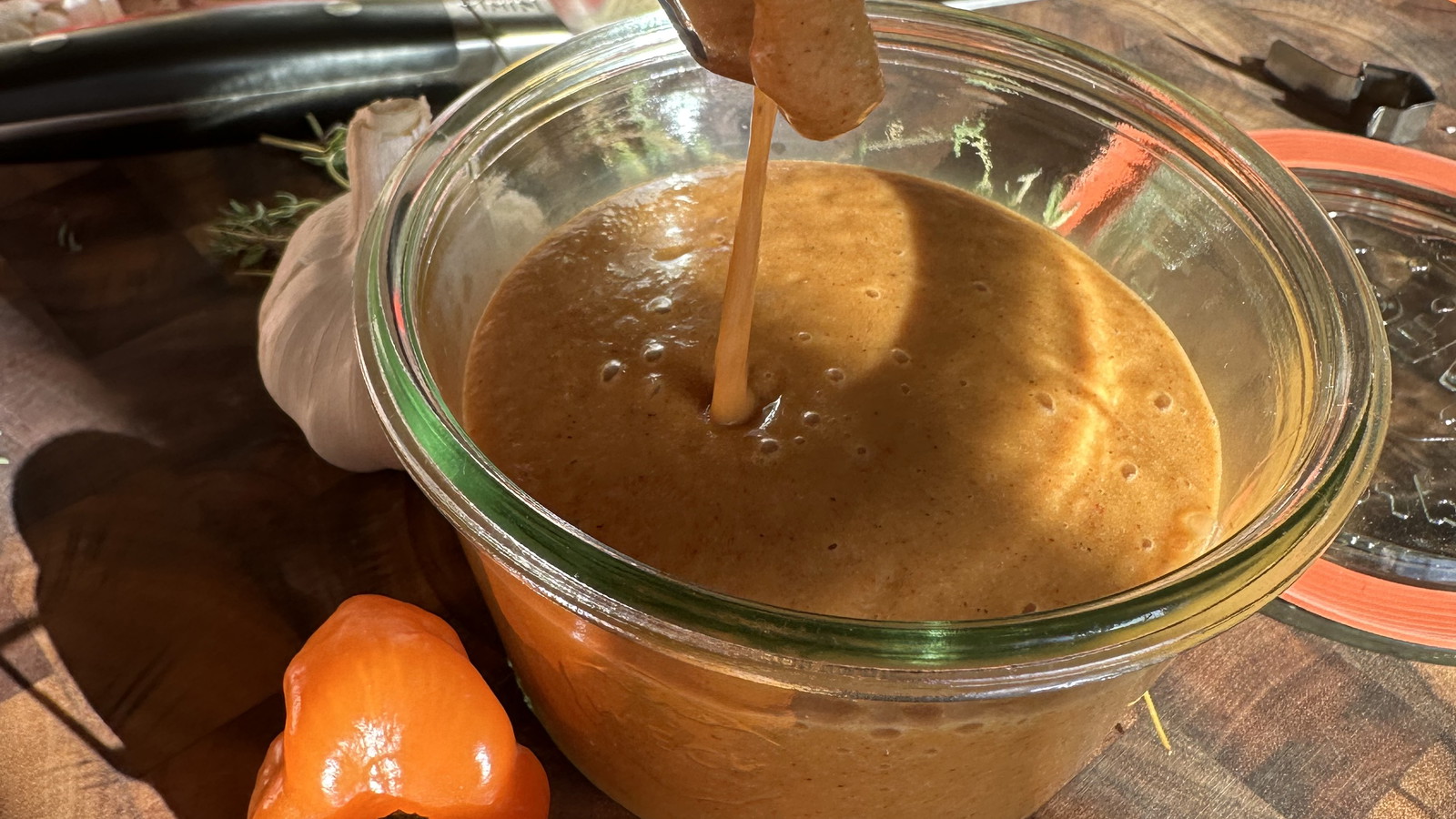Jerk Sauce: A bold, deeply rooted flavor
Share

Few flavor profiles are as instantly recognizable and culturally rich as jerk. Smoky, spicy, and full of character, jerk is more than just a seasoning blend it’s a technique. A culinary tradition born in the Afro-Caribbean diaspora, rooted in resilience and passed down through generations. Traditionally, it involves marinating proteins in a powerful mix of spices, then cooking them low and slow over fire often using pimento wood for that unmistakable aroma.

Just like curry, mole, or its cousin American BBQ, this sauce is a personal interpretation of jerk. By understanding the soul of traditional jerk, you honor its depth and history while adapting it to what’s practical and flavorful in most kitchens. You won’t need a grill pit or fresh pimento berries, but you’ll still capture the heat, herbaceousness, and complexity that makes jerk such an unforgettable flavor.
One of the defining ingredients here is ketchup a nontraditional addition, but one that adds subtle sweetness and acidity to balance out the spice. It’s a nod to kitchen improvisation something many of us grew up with and a great example of how jerk, like so many cultural staples, evolves with its cooks. The addition of ketchup isn’t traditional, but many folks add ketchup or hot sauce on top of their jerk at the end, so it’s not far off.
This sauce works beautifully as both a marinade and a finishing sauce. Add more oil or vinegar to loosen it up for long soaks or keep it thick and brush it on during cooking for a glossy, charred finish. It pairs especially well with my dry jerk rub, which builds a base of warm spice and lets the sauce bring it all home. To be frank it slaps on the grill.

Why You’ll Love This Jerk Sauce
Balanced, Deep Flavor
Combines savory, spicy, sweet, and tangy elements into one versatile blend. The inclusion of fresh aromatics and warm spices makes it flavorful enough for any protein from chicken and pork to tofu, jackfruit or mushrooms.
Customizable Spice Level
Whether you prefer a little heat or a fiery finish, this sauce adapts. Use fewer Scotch bonnets for a gentler experience or leave the seeds in for a bolder punch. The foundation stays consistent it’s just the heat that changes.
Versatility
Use it thick as a basting sauce for grilled or roasted proteins, or thin it out with oil and vinegar to make a bold, flavorful marinade. One batch offers multiple uses throughout the week. I like to keep a condiment bottle in the fridge during the summer it’s great on chicken wings too.
Pro Tips for Success
-
Marinate Overnight: For deeper flavor, apply the sauce (or marinade version) and let your protein rest for 8–12 hours before cooking.
-
Pair with the Dry Rub: Layering the rub first gives the sauce more to grip onto, adding another dimension of flavor. The rub also creates a crust when grilled or pan-seared.
-
Use a Blender: This sauce relies on blending aromatics into a smooth, consistent base. A blender or food processor makes a noticeable difference in texture.
-
Balance with Citrus: Lime juice helps keep the flavor bright. Don’t skip it. Try adding orange juice for a fresh twist.
Rheal Kitchen Talk
This isn’t a traditional jerk sauce and it’s not trying to be. Jerk cooking looks different from island to island, family to family. This is my take, built with the ingredients I use most often and the flavors I return to again and again. It’s smoky, spicy and complex bold enough to shine on the grill, balanced enough to dip a roasted potato in.
And yes, there’s ketchup in it. It’s not traditional, but it adds that sweet-savory balance that so many home cooks have improvised into their versions over time. It nods to tradition while carving out space for creativity something I think is true to the spirit of jerk itself.
This one’s layered, adaptable and made by you.

